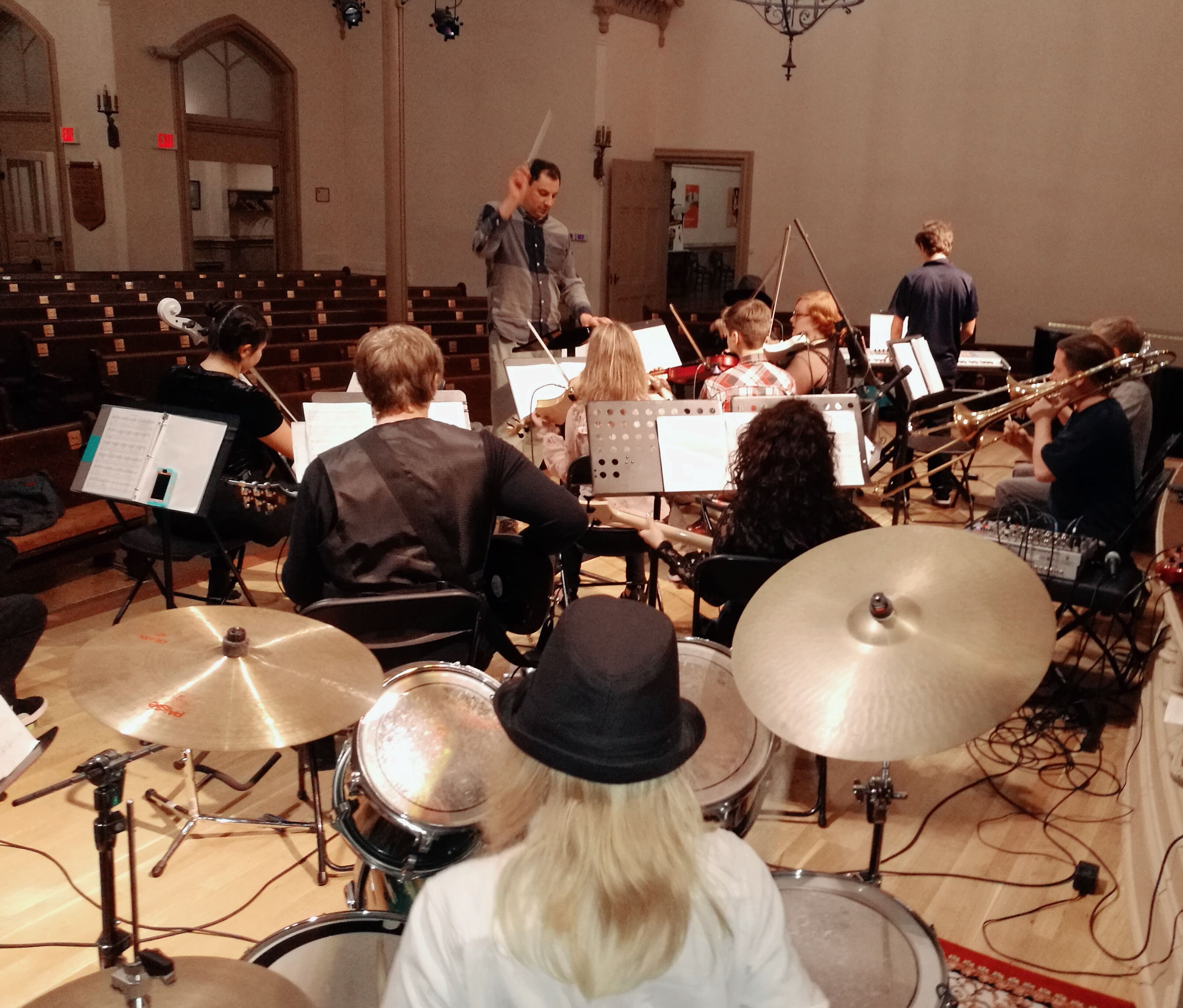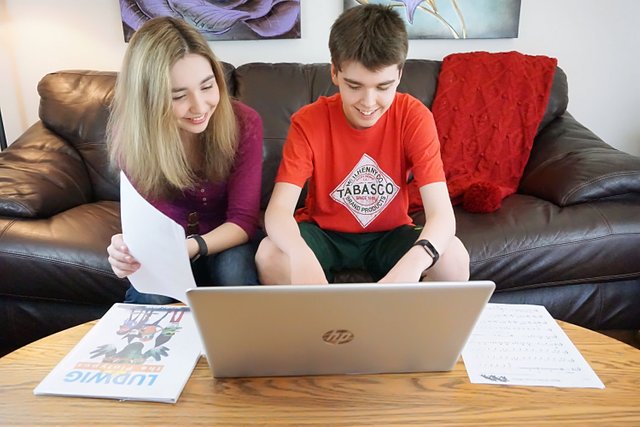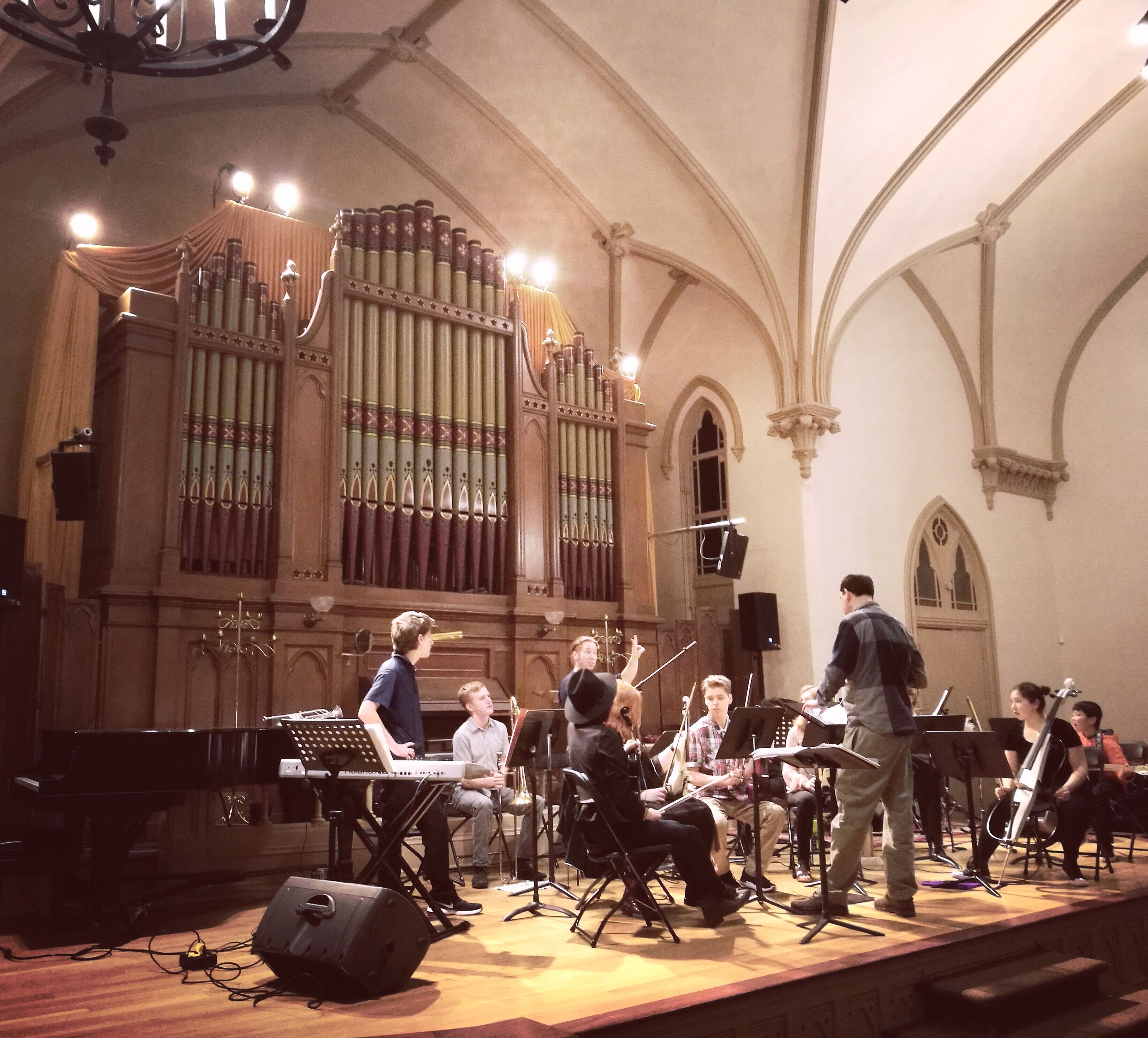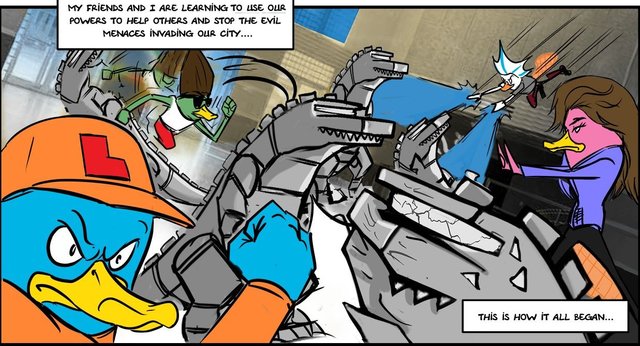
In our last post, we announced that our homeschool music project is coming to life on stage through the musical talent of the Pacific Youth Rock Orchestra. The orchestra has taken time to learn three of our music compositions from our upcoming cinematic/rock orchestra album - Ludwig the Platypus, based on an upcoming comic book series. You can check out our latest post here.
We have been working with the Pacific Youth Rock Orchestra since January, and have learned a lot along the way. One of the many lessons we’ve learned is music arrangement. When we started, we had no clue that arranging music would be one of the most challenging tasks yet in our music composition education.
Learning Music Arrangement

At the beginning of this project, our music composition tutor, Willow Goodine, gave us the task of arranging our music based on the instrumentation of the Pacific Youth Rock Orchestra, and more challengingly, the skill level of each student musician. Throughout the course of this project, we’ve learned that arranging music is similar to composing, with one main difference. Arranging music is about restructuring existing music, while composing music is about creating music from scratch.
When we compose music, we often come up with simple melodies on a single instrument (usually piano), and then we build onto the song by adding harmonies and counter-melodies with other instruments. In the creative process of composing, we decide what instruments will be playing our music through the digitally generated sounds of our music composition program. When we arrange music, we are restructuring our music to work for the orchestra based on their varying experience levels, and on which instruments are present in the orchestra.
Learning Through Observation

Before we began to arrange our music for the orchestra, Willow made us a list of the instruments that would need to be used, as well as the general experience level of each musician. This helped us start the process of arranging our music for each individual student.
One aspect that helped us the most was to observe the students in the orchestra before completing each arrangement. We were able to observe the dynamics of the orchestra, such as students experience level, site reading abilities as well as how the group performed as a whole.
New Opportunities, More Learning

Arranging music was challenging at first, but when we heard our music come to life through the young, talented musicians of the Pacific Youth Rock Orchestra, it became a lot more exciting. We are incredibly grateful that we have been able to learn this lesson so we can apply this experience to future projects and collaborations.
Thanks for reading! In our next post, we will talking about working with the student musicians, and what we learned when we commissioned our first song to the orchestra.
Cheers!

For those who are interested in supporting our homeschool education, consider buying one of our music pieces, here, or one of our children's books, here.
You received a manual upvote from @MusicVoter and people following my Curation Trail due to the musical content of this post.
To find out how I decide who to up vote please READ THIS
Do you want to EARN CURATION REWARDS AUTOMATICALLY and help independent musicians?
HERE'S HOW
@MusicVoter is part of the Atom Collector Records family
Add dsound tracks and DTube & YouTube videos, get more fans and earn $INDIE!
Downvoting a post can decrease pending rewards and make it less visible. Common reasons:
Submit
Your post received an upvote by the @illuminati-Inc music curation team and its partner @curie.
You may consider voting for the Curie witness; all witness payouts are used to fund Curie operations including but not limited to more than 10 curation teams (vote here).
Downvoting a post can decrease pending rewards and make it less visible. Common reasons:
Submit